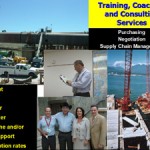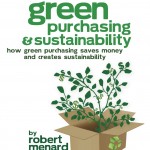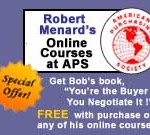
Robert Menard, Certified Purchasing Professional, Certified Professional Purchasing Consultant
Experts in purchasing are rare indeed – an expert witness in purchasing is close to unique. Most practitioners in the purchasing field are far from professional. Only a comparative few have earned any professional designations. Because of these facts, many lawyers resort to broker agencies to find a purchasing expert.
Whether you are a lawyer, referral source or a broker, here is profile of an expert witness in purchasing.
Content expertise Published works such as books, workbooks, online courses, CDs, MP3s and the like all indicate content expertise. At the very least, magazine articles or interviews with industry authorities are required. Speeches, talks, seminar and workshops to industry groups are another reliable indicator. Peer recognition from fellow professionals is more difficult to establish but an expert witness in purchasing should be able to provide verifiable sources.
Professional designations Certified Purchasing Professional (CPP), Certified Professional Purchasing Consultant (CPPC), and Certified Professional Purchasing Manager (CPPM). are recognized standards of excellence. They demonstrate dedication and devotion to the profession and differentiate the pro from the pretender.
Education credentials An MBA is not near as important as a CPP for the expert witness in purchasing. Since purchasing is a process and systems oriented profession, undergraduate degrees in the sciences, business, engineering, and finance tend to favor a career in purchasing.
Experience in the field An expert witness in purchasing should have at least two decades in the purchasing profession in a variety of capacities such as sourcing, contract management, negotiation, supplier qualification and evaluation, foreign trade, business law, training, and consulting.
Oral and written communication skills Well developed oral and written communication skills are mandatory. A history of published works and experience with spoken presentations (such as seminars, speeches, etc) is a helpful indicator here. The expert witness in purchasing will need to compose oral and written reports. Depending upon the facts of the case, a well crafted and imposing report with unshakeable opinions can often encourage settlement, especially if the opposing party does not want the expert witnesses report to be made public.

consulting services
References
A recognized and true purchasing expert should have dozens of references from coworkers, clients, and fellow purchasing pros. These should be immediately available in the form of a web page, PDF document or even on Linkedin. Most importantly, the expert witness in purchasing should have references from attorneys he has served.
Knowledge of and experience with the legal process To work well with legal professionals, the expert witness in purchasing must be familiar with discovery, depositions, and testimony. An understanding of direct and indirect examination and the ability to hold up under legal pressures is helpful.
Other skill sets
- Many law suits never reach the court house. For those that do, an ability to testify appropriately is required. Depending upon the scope and magnitude of the law suits, some lawyers help the witnesses with mock depositions and testimony, using video tape as an instructional tool. Ask your lawyer about answering “hypothetical questions”, saying “I do not know”, and how to recognize other traps posed by opposing counsel.
- Always let your lawyer take the lead and never let the opposing lawyer take the lead or let him confuse you. Answer the questions in direct testimony with short, clear, and direct responses. Let the lawyer develop the case at his approach and pace.
- Do not volunteer information that is not asked. This is especially true for cross examination. Respond to opposing counsel’s cross examination in ping pong style with short strokes.
- The expert witness’s testimony should not self aggrandize. Rather, the expert witness wants to come across as a personable and knowledgeable authority whose valuable opinions carry the weight of persuasion.
- Practice in Alternative Dispute Resolution (ADR), particularly arbitration as opposed to mediation, is very helpful. My 15 years of service to the American Arbitrations Association Panel of Arbitrators provide a thorough mastery of adversarial representation techniques.
- This web site has other helpful tips.
For attorney’s seeking an expert witness in purchasing, call 214.513.8484 in Dallas or send me an email to RobertMenard@RobertMenard.com






